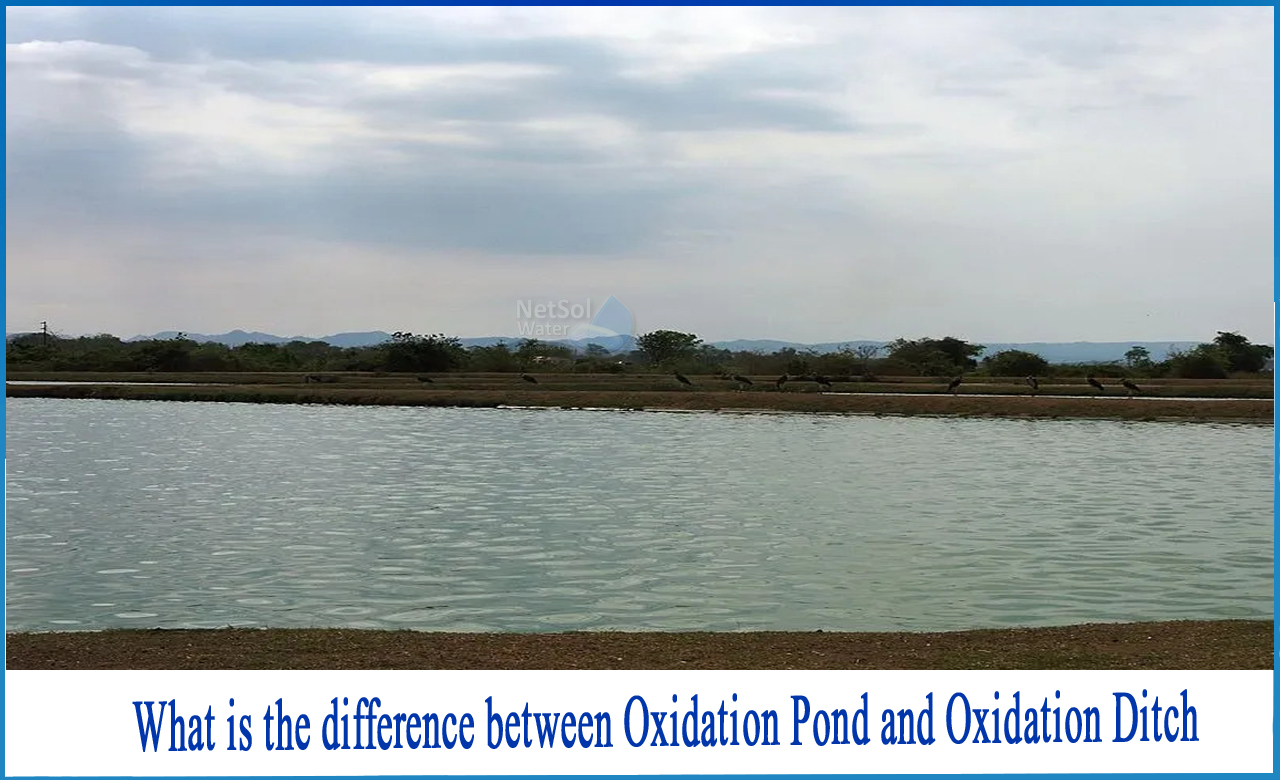What is the difference between Oxidation Pond and Oxidation ditch?
In this blog we discuss the difference between Oxidation Pond and an Oxidation ditch.
What is an Oxidation Pond?
Oxidation ponds, commonly referred to as waste stabilization ponds, are self-contained treatment facilities. Municipal wastewaters are treated in oxidation pondsthrough the interaction of sunlight, bacteria, and algae.During photosynthesis, algae releases oxygen, which is required by aerobic bacteria. Mechanical aerators are occasionally used to provide even more oxygen, lowering the area of the pond required.
Types of Oxidation ponds
Oxidation ponds come in a variety of shapes and sizes.
Aerobic (high-rate), anaerobic, facultative, and maturation ponds are the four main types of oxidation ponds.
Design of Oxidation ponds
Oxidation ponds are designed in a variety of ways. Completely stirred or plug flow reactors are developed for oxidation ponds, however mass transport processes have a higher impact than the reactor model used. Diffusion, advection, gravity, and interception are the four basic mass transport mechanisms at work in oxidation ponds. The observed mechanism(s) are dependent on the type of wastewater treated.
Advantages of Oxidation Ponds
i) Simple to assemble
ii) Cost-effective
iii) Low-cost maintenance
iv) Disinfection is not required for effluent
v) Able to handle a wide range of hydraulic loads. It's perfect for small towns and tropical areas
vi) Handles many forms of wastewater (industrial or municipal).
What is an Oxidation Ditch?
Oxidation ditches are a sort of extended aeration procedure in which the aeration tank is built in the shape of a ditch or oval. It's a biological treatment procedure for activated sludge that uses lengthy solid retention durations to remove biodegradable organic materials. Impervious materials such as reinforced concrete, asphalt, and clay are widely used in oxidation ditches. The oxidation ditch is a secondary wastewater treatment method that can be used in any situation that requires activated sludge treatment (traditional or prolonged aeration). Because oxidation basins can be sized using a suitable SRT to achieve nitrification, oxidation ditches are used in wastewater treatment plants that need nitrification of effluent.Because it requires more land than traditional treatment plants, this technique is effective and finds application in tiny installations, small settlements, and isolated institutions.
Typical oxidation ditch treatment system consists of
Basin:The aeration tank consists of a single or multi-channel configuration within a ring shaped basin 1.0 to 1.5 m deep.
Bar screens: Preliminary treatment such as bar screens normally precedes the oxidation ditch.
Surface aerators: The aeration increases the dissolved oxygen concentration.The horizontal or vertically mounted mechanical aerators are used to provide circulation, oxygen supply, aeration and at the same time to provide sufficient horizontal velocity for not allowing the cells to settle.
Advantages of Oxidation Ditch
i) This process is reliable over other biological treatment processesowing to a constant water level andcontinuous discharge.
ii) Resilient to the impact of shock load or hydraulic surge due to long hydraulic retention time and completemixing.
iii) Production of less sludge than other biologicaltreatment processes. Only 15% of original BOD ends up as sludge.
iv) Energy efficient operations results in reducedenergy costs.
Conclusion
One of the biological systems utilized for wastewater treatment is the oxidation pond. It is a secondary treatment technology that accelerates the natural filtration and stabilization of wastewaters such as home sewage, trade waste, and industrial effluents. In an oxidation pond, the biological treatment process mostly involves interactions between bacteria, algae, and other species.
Oxidation ditches are installed at significantly loweroperation and maintenance costs than othersecondary treatment processes. In comparison to other treatment systems, oxidation ditches need less energy, demand less operational care, are simple to maintain, and do not require chemical addition.
What can we offer?
Netsol Water is one of the leading water and wastewater treatment company in India with services in the field of WTP manufacturing, WWTP manufacturing, RO Plant manufacturing, STP manufacturing, ETP manufacturing, Water Softeners, and much more. The company designs and manufactures all in one system that are ideal for treating wastewater and the sludge generated.
For any further assistance or product-purchase related query,
Call us on +91-9650608473;
Or, write us at enquiry@netsolwater.com



